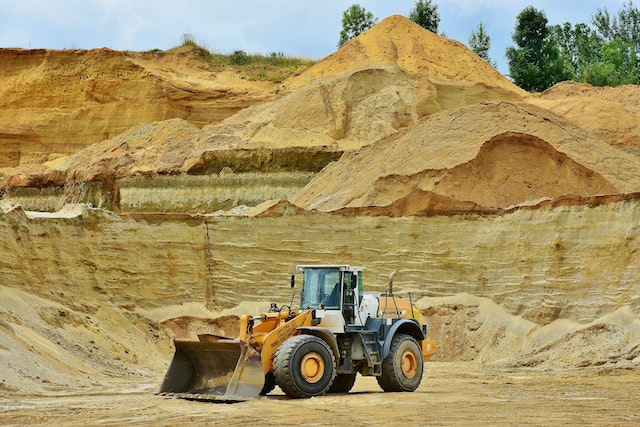The year ahead brings more milestones and complexity for critical minerals in an industrial era of de-carbonisation and electrification.
Glencore and BHP are fast-tracking coal mine closures and Senex has paused its gas expansion, but future wealth is tipped in energy transition materials as major economies slowly wean themselves off fossil fuels.
Companies are working with investors and governments to upgrade Australia’s “dig and ship” economy to add more refining and processing, although there is stiff competition from heavily subsidised North American competitors.
Despite economic uncertainty, Europe is also looking to secure supplies for electrifying transport and industry to reduce its dependence on China.
“Demand for minerals crucial to new low-emissions technology, such as lithium, copper and nickel, remains strong and is supporting prices,” Resources Minister Madeleine King says.
A typical electric vehicle contains five times as much copper than a conventional internal combustion vehicle and a lithium battery contains more nickel than lithium.
“These materials, along with other critical minerals and rare earths, will be crucial to low-emissions technologies such as batteries, solar panels and electric vehicles,” Ms King says.
Lithium exports are expected to exceed $16 billion in 2022/23, up from $5 billion in 2021/22, and making lithium the sixth-largest export among Australia’s resource and energy commodities.
But the latest forecasts from the Office of the Chief Economist also show growth in lithium export earnings slowing in 2023/24.
Still, global EV sales are set to reach 15 million in 2023 and 18 million in 2024. By 2024, almost one fifth (18 per cent) of global nickel demand is forecast to be for battery materials – up from five per cent in 2018.
BHP’s pre-Christmas takeover of OZ Minerals and its future-facing copper and nickel adds to the mining giant’s trove of metals used in clean energy and electric cars.
OZ Minerals’ West Musgrave project is designed to be one of the world’s largest, lowest cost and least polluting copper-nickel operations.
But it’s still some years away and also requires significant energy infrastructure.
Nearby nickel-cobalt hopeful NiCo Resources will release an updated mineral resource estimate in early 2023 for its Central Musgrave project.
Meanwhile, the largest ASX-listed lithium company Pilbara Minerals has promised investors that 2023 will bring the first ever dividend – four years after the first shipment from the Pilgangoora mine in WA.
But labour shortages and rising construction costs, a theme of 2022, are in the works again for miners.
For example, the expected cost of Pilgangoora’s expansion has jumped by more than a third (36 per cent) to $404 million, the company warned in late-December.
Still, upping the price for major offtake customers is helping to generate more than enough cash for a strong balance sheet and rapid growth into 2023 and beyond, according to Pilbara Minerals CEO Dale Henderson.
Site construction continues at newcomer Core Lithium’s Finniss Project near Darwin, with first production of spodumene – lithium ore – concentrate on track for the first half of 2023.
It will be the first lithium plant outside Western Australia and was added to Australia’s official “major project” list almost two years ago, aiding its rapid development.
Liontown’s Kathleen Valley lithium project in WA has all major approvals in place and forecasts site construction to be complete in the fourth quarter of 2023, with offtake agreements already in place with LG Energy Solution, Tesla and Ford.
Mt Marion in Western Australia is the world’s second-largest high-quality spodumene mine in production. Owned 50/50 by Australia’s Mineral Resources and China’s Jiangxi Ganfeng Lithium, output is being expanded and processing upgraded.
But the federal government hasn’t joined mining powerhouse Canada in demanding that China – a longstanding investor – exits Australian lithium or other critical mineral projects.
MinRes, with US joint venture partner Albemarle, is also restarting Wodgina – one of the largest known hard rock lithium deposits in the world.
China’s Tianqi Lithium has developed a lithium hydroxide plant in Kwinana, south of Perth and 250km from the Greenbushes mine – the world’s largest and highest-grade source of hardrock lithium.
By 2024, Australia could have up to 10 per cent of global lithium hydroxide refining capacity.
A lithium mine half-owned by Australian industrial giant Wesfarmers intends to join the global battery supply chain from a once abandoned Mt Holland mine site, southeast of the historic gold-mining town Southern Cross.
Covalent Lithium, which is 50/50 owned by Wesfarmers and a Chilean company, is developing the mine and a refinery in Kwinana that will take the raw material and produce battery-quality lithium hydroxide.
More than $US50 billion of investment in US-based manufacturing of battery components and solar modules is creating significant industrial demand for rare earths and critical minerals.
“This means a lot for WA and Queensland and will create investment in areas of Gladstone and Townsville and and far north Queensland that will open up these areas,” David Scaysbrook, co-founder and managing director of Quinbrook Infrastructure Partners, says.
Lynas Rare Earths has a head start in the race to upgrade from raw to refined materials and is building a processing facility in Kalgoorlie, WA.
With its materials in demand for defence, communications and energy, the project has also benefited from three years on Australia’s major project list, which brings federal help with environment, biosecurity or foreign investment hurdles.
Nickel hopeful Ardea Resources was added to the federal list in 2022, opening doors for its planned Kalgoorlie nickel project in WA.
Ardea CEO Andrew Penkethman says 2023 is shaping up as a pivotal year, with promised milestones including an update on a strategic partner, new executive hires, and new exploration data.
Scientists from CSIRO are working with Ardea’s small team, building on success in new methods to locate deposits. The results have also secured WA government funding for drilling.
The Office of Chief Economist says there will be opportunities for many Australian producers as economies look beyond China for supplies.
US tax laws passed in 2022 favour critical minerals extracted and processed in North America or free trade partners such as Australia.
The US tax breaks, as well as broader trends in global battery and EV production, are expected to affect Australia’s exports over the coming decade.
But the rate and magnitude remains subject to considerable uncertainty.
Mr Scaysbrook says he expects a lot of headlines about plans but warns 2023 could be “pretty lean” in actual new investment.
Australia needs to start to see tangible commitments made to new processing and new partnerships, he says.
Marion Rae
(Australian Associated Press)






